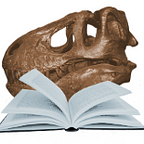Skeletonizing a coyote: Part 2
Just a quick update on the coyote currently processing in manure…
I’ve never taken this method before, relying mostly on dermestids or other necrophagous insects, macerating, etc. However, I’m pretty happy with the progress. For those of you who remember, I picked up a roadkill coyote two months ago and packed it into my old garden raised bed with a heaping amount of manure and compost.
To avoid people unintentionally seeing gorey content, I’m putting some filler space here.
WARNING: THERE IS GOREY CONTENT OF DECAYING/DECOMPOSING ANIMAL REMAINS IN THIS POST. NO ANIMALS WERE HARMED DIRECTLY FOR THIS POST. ALL ANIMAL REMAINS WERE SALVAGED.
.
.
.
.
So here you can see one half of the raised bed. This project has had some unintended consequence like volunteer squash plants growing up from seeds in compost that I haven’t had to water or tend much to. If you look in the lower right corner, you can see the atlas vertebrae coming up from the bed. This depression is where I pulled the skull and lower jaws from last night after digging them out.
You can see the skull is defleshing pretty well at this point. I don’t have a picture of the occlusal view, but the entire palate is cleaned off and the pterygoid plates are perfectly exposed. Also in this photo, you can see some of the pelvis and a limb. One issue I’ve had is that if I do not leave the bed covered, neighborhood animals, both feral and domestic are attracted to dig into the box.
One thing I’ve noticed is that there is no noticeably smell provided everything is sufficiently buried, granted, of course, as stated above, it doesn’t mean that there’s not an odor other animals can’t detect (goes to show you how sensitive human noses are versus other animals).
In the second picture, you can see how the defleshing process is going on the mandibles. Everything has stayed relatively in tact, so the softer tissues are decaying faster than the ligaments which hold the teeth to the alveoli.
I’m not sure how I feel about this method, but in about a month from now I’m going to dig up and check into the progress on the tail bones and the distal limbs, as the little phalanges, carpal and tarsal bones, an distal caudals are prone to disarticulate much more readily.
If I were going to do this again, especially with smaller animals, I would probably build a wire cage with hardware cloth (with window screen on the bottom) to keep ensure there is no loss of any bones and to allow ligaments to dry out around the phalanges, carpals, and tarsals and keep them tight with each other.
Stay tuned for more updates …
